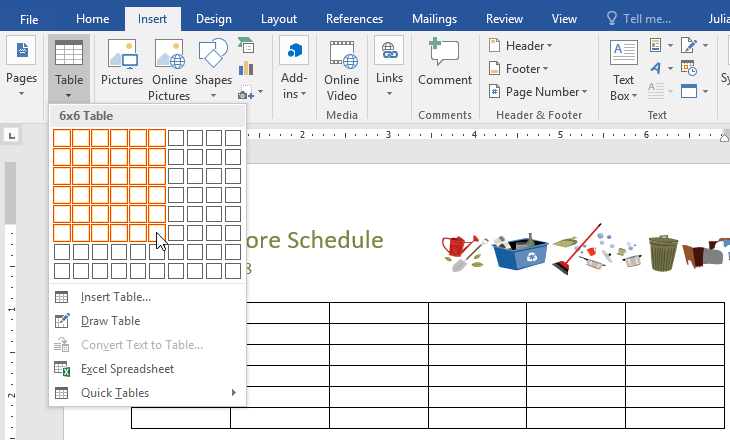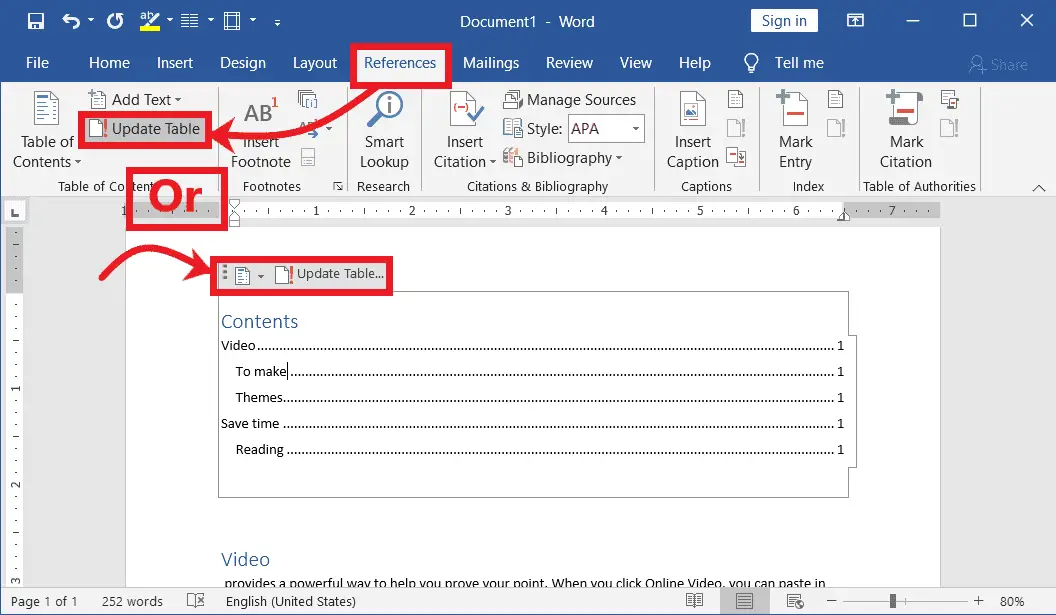
- HOW TO CREATE TABLE OF CONTENTS IN WORD 2016 HOW TO
- HOW TO CREATE TABLE OF CONTENTS IN WORD 2016 UPDATE
- HOW TO CREATE TABLE OF CONTENTS IN WORD 2016 PC
HOW TO CREATE TABLE OF CONTENTS IN WORD 2016 UPDATE
As a result, Word also provides a straightforward way to update the table of figures to reflect any changes made. Understandably, your captioned objects may move around as you add, remove, and edit content in the document. Your table of figures will now be inserted in your Word doc. Once you’ve tweaked your settings, click “OK.” Here, you can also adjust several options and customize the format of the table. Once selected, the “Table of Figures” window will appear, displaying the print and web preview of the table of figures. Next, head over to the “References” tab and select “Insert Table of Figures.” Once you’re ready to insert your table of figures, go ahead and click the location of the document in which you would like the table to be added. We’ll assume that you have already captioned the relevant material in your Word document in this example. Using any version of OneNote, it will all start with a new note container and a right click.
HOW TO CREATE TABLE OF CONTENTS IN WORD 2016 HOW TO
It’s important to note, however, that adding a table of figures is only possible if you add captions (not to be confused with alternative text) to your figures, images, and tables. How to Create Links to Pages or Individual Notes Fortunately, its really easy to make a Table of Contents in OneNote. This is especially true for longer documents with an excessive amount of media. This allows you to quickly update your table of contents (either the whole thing or just the page numbers) after making amendments to your document.Adding a table of figures is a useful tool for allowing the reader to quickly navigate to specific parts of the document (or as a personal quick reference guide).
HOW TO CREATE TABLE OF CONTENTS IN WORD 2016 PC

If you want to customize your table of contents, click “Custom Table of Contents” instead. This will create an automatic table of contents (including a title saying “Contents”) using the first three “Heading” styles.

To apply customized headings, go through each heading and subheading in your paper and click the required style. In the new window that opens, pick the formatting options required.Īlternatively, you could apply formatting to one heading or subheading, select the formatted text, right-click the “Heading” style in the menu and select “Update to Match Selection.” This will change the style to match the highlighted text.To create a table of contents, the styles we need are labeled “Heading.” MS Word comes with a number of default “Heading” styles (e.g., “Heading 1,” “Heading 2”). The “Styles” menu can be found on the “Home” tab in MS Word. However, there’s an easier way: Use Microsoft Word’s “Style” options to create a table of contents that can be updated at the click of a button! How to Modify Styles If you like doing things the slow way, you could type this out manually and painstakingly modify it every time you make a slight change to a subheading. Whenever you write a longer paper, particularly a thesis or dissertation, you’ll need to include a table of contents. How to Create a Dynamic Table of Contents in Microsoft Word


 0 kommentar(er)
0 kommentar(er)
